 |
Loadin
|
 |
 |
Loadin
|
 |
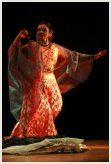 |
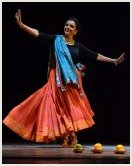 |
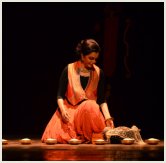 |
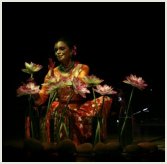 |
 |
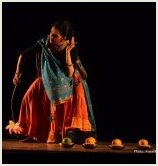 |
|
Home
| Synopsis
| Credits
| Calendar of Performances | Critics Speak | Response | Photo Gallery
a million SITA-s - Response a Neo Bharatam presentation Response - students' feedback to the performance on May 3, 2015 at the NYU Steinhardt School, Greenwich Village Storytelling in the Classroom, Spring 2015 - Melissa Sokolski A Million Sitas, Including Me Anita Ratnam’s description as an “intersectionist” (Ratnam) is an apt and accurate characterization. She brings theatrical spectacle to storytelling with the use of music, props, dance, and costume. What strikes me as the most successful aspect of her performance, which I have seen many one-man “shows” lack, is her easy integration of all of the above. Her costume changes occur right on stage with little to no disguising of them; she speaks frankly to the audience about her purpose, giving life not only to the stories but to the audience as well, and she even speaks to her assistants on stage (Ratnam) – no fourth wall in sight. Her use of props and gestures in dance particularly stand out. She employs various fabrics throughout her storytelling, and she paints such a vivid picture, she can turn those scarves into anything! In particular, her use of a grey scarf to convey the sadness of Ahalya as she turns into stone was haunting (Ratnam). In Ratnam’s dances her sharp gestures do the storytelling for her, and this was especially clear to me in her portrayal of Manthara the hunchback instructing the queen to claim her two boons (Ratnam). I am certain there are many gaps I could not fill when interpreting her dance. This type of Rantam’s storytelling reminds me of Josephine Cho’s Korean storytelling in class (Ress) – I could not tell what exactly happened, but I understood the message of the value of honesty quite clearly. Ratnam’s woman-centered themes were not lost on me, however, even through dance. Ratnam’sstorytelling in another language besides English also created gaps in the story for me. In listening to her singing and chanting I was reminded of our collegial debate in class on the question of “whose story is it?” (Ress). Being a non-South Asian and very unfamiliar with TheRamayana, I noticed jokes or references at which South Asian audiences chuckled or murmured, but were lost on me. I understood that this storytelling was a feministretelling of TheRamayana. Ratnam explicitly shares as much with the audience, though she does so briefly, moving on to making jokes on Rama’s behalf (Ratnam). At first disappointed that there seemed to be a whole world of the story I was missing, by the end of the storytelling, I found I was glad to have heard this version first. After all in listening, “each person creatively reconstructs the story being told through their own imaginative response” (Simms 15). Even if I had heard or read The Ramayana hundreds of times before, Ratnam’s retelling on May 3, 2015 would always have been different to me than anyone else’s reception of it in that audience. My story, reconstructed in my mind out of hers, was confirmed when Ratnam announces she is Sita and so are all of us. I understood her story about Sita to be about the sidelining and silencing of women both in India and around the world, both today and throughout history. Whatever I might have “missed” on that stage did nothing to hinder the impact of “A Million Sitas” for me, another testament to the effects of storytelling. Works Cited Ratnam, Anita. “A Million Sitas.” The Provincetown Playhouse. 133MacDougal Street, New York, NY. 3 May 2015. Performance. Ress, Regina. “Storytelling in the Classroom.” New York University.194 Mercer Street, New York, NY. 3 April 2015. Lecture. Simms, Laura. “Sudden Story.” Storytelling Magazine 13.1 (2001): 15-18. Print. Home | Contact |
About Arangham | About Anita Ratnam |
Events | Archive of events | Calendar of events
| On Tour | Press
|
Articles | Lectures | Publications | Active Repertoire | Festivals | Conferences | Rituals & Revivals | Workshops | Art & Activism |